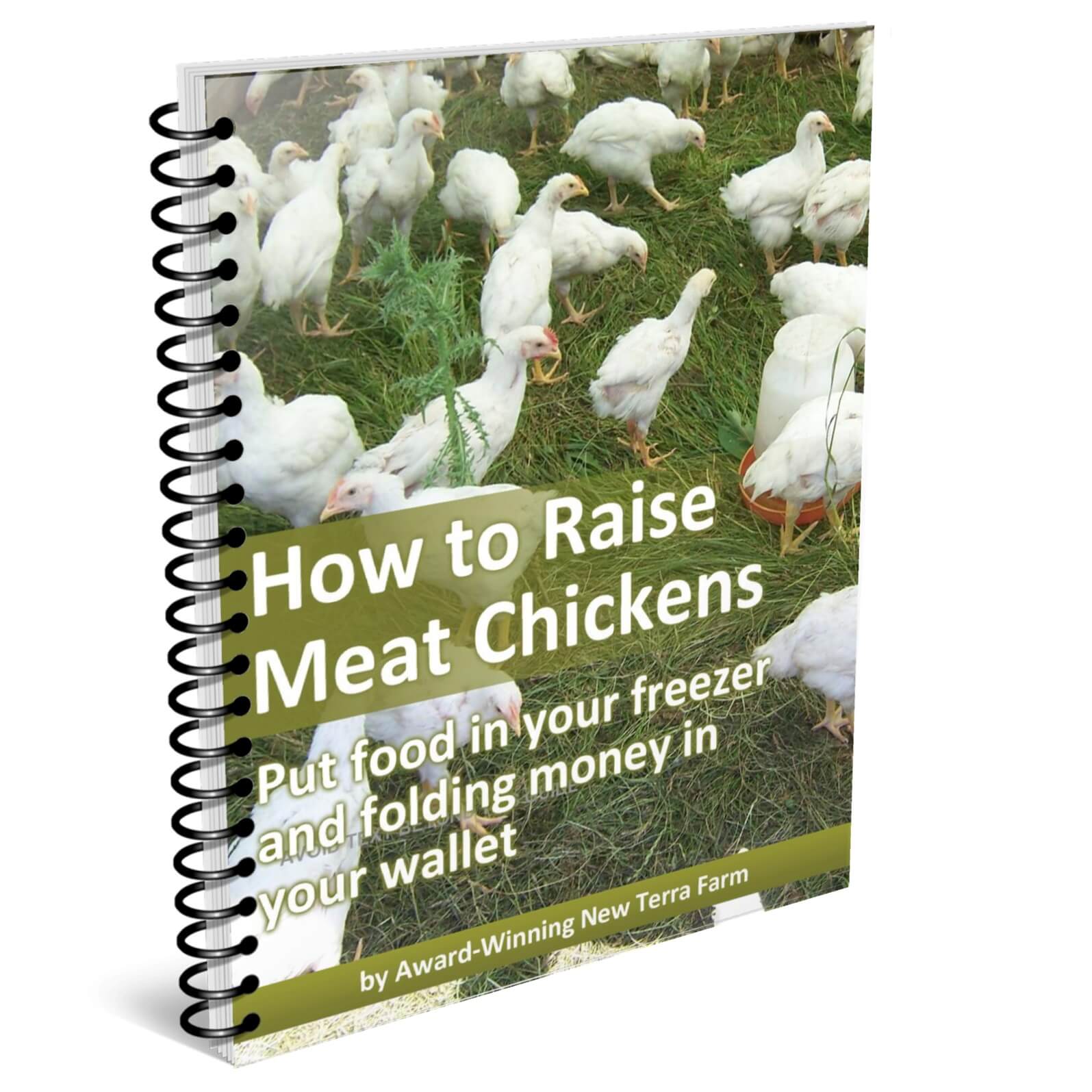Chicken Coop Construction for the Home BuilderWe have engaged in chicken coop construction a number of times during our tenure here at New Terra Farm. We have constructed a variety of portable coops, 'chicken tractors', and have also retrofitted existing buildings with chicken coops for our egg laying flock.
Chicken coop construction inside an existing structureRetrofitting a chicken coop in an existing structure may be the easiest and cheapest solution for a small flock, especially laying hens.
 Chicken coop construction from light framing limber and chicken wire Chicken coop construction from light framing limber and chicken wireThe above shot is in my small barn; you can see the coop we framed in quite quickly with 1 inch mesh chicken wire. The barn has concrete floors and power. However, we subsequently stopped using it for chickens because the dust they kicked up wasn't healthy for the ponies also housed in the barn. We fixed up a small outbuilding and moved the chickens there. See photo below. Building a stand-alone permanent coopBuilding a stand-alone permanent coop has the same points of consideration as the retrofitted coop with respect to size requirements, and 'furniture' for the chickens i.e. nest boxes and roosts.
 We sheathed this old outbuilding in rough-cut 1x10 and moved the laying hens in. We sheathed this old outbuilding in rough-cut 1x10 and moved the laying hens in.The coop in the photo was an old log outbuilding that wasn't in use when we bought the farm. It was dilapidated but the roof was good. To make it chicken-ready, we ran a power line, sheathed the walls in rough-cut lumber, and added nest boxes and some perches cut from 3 inch tree branches. The total cost was about $200. However, you could probably multiply that by 10 if you had to build the structure from scratch. 50 sq ft and fresh eggs?One of my joys at New Terra Farm is going out to my chicken coop every day to collect fresh, organic eggs. If you’ve ever found yourself questioning the rising cost and declining quality of store-bought eggs, you’re not alone; and there’s a practical solution, even if you don't own a farm. I didn't write this one but it's a great resource anyway. If you can find 50 sq. ft. on your property this is a straightforward, hands-on guide for setting up a compact backyard chicken coop that can supply your household with a consistent flow of fresh, nutrient-rich eggs. It’s designed for people who value food security, self-sufficiency, and a healthier lifestyle, even if they have no prior experience with raising chickens. This system walks you through building a durable coop using common, affordable materials—typically for under $100. It’s low maintenance, fits in a small space (around 50 sq ft), and requires only a few minutes of attention each day. The guide includes detailed plans and practical tips for everything from predator-proofing to choosing quiet, productive breeds. If you’re looking to reclaim control over your food source, reduce grocery bills, or even create a modest income by selling excess eggs, The Eggs Factory offers a practical, community-tested solution to get started.  Get my FREE One-Acre Farm Plan and learn how to raise pigs, chickens and more, integrated with an organic market garden, to
make more money from your small property. More like Chicken Coop Construction . . .A 'chicken tractor' is basically a low, wire-enclosed, open-bottomed box for raising chickens. Here are some examples. There are two main models for raising meat birds on pasture for the small farmer; day range poultry and the chicken tractor model. How do they compare? Here are a few chicken coop ideas you can use for your own backyard chickens or small commercial flock. New Terra Farm reviews Free Chicken Coop Plans All I need to know I learned from one dumb cluck. Life lessons from the chicken coop If you are ready to raise chickens on your small property either to put food in your freezer or some money in your wallet, you might want to check out my book How to Raise Meat Chickens. A LOT of chicken raising information, plus plans for my movable coop and the new Hoop Coop. PS: for an even better deal, How to Raise Meat Chickens is included for FREE when you upgrade to my Complete Start Farming Pack
|
See something you like? Share!
Recent Articles
-
Farm grown reviews of products recommended by New Terra Farm
Dec 04, 25 06:26 AM
Find great farm and garden products in my farm grown reviews -
Best Chicken Coop and Accessories for Small Farms and Homesteads
Nov 30, 25 09:18 AM
Looking for the best chicken coop? Here are the top coops, accessories, nest boxes, and gear to build a safe, productive poultry setup. -
Community Supported Agriculture Marketing Ideas To Sell Out The Season
Nov 05, 25 05:18 AM
Authentic Community Supported Agriculture marketing ideas to grow loyalty, boost sign-ups, and sell out your CSA every year




